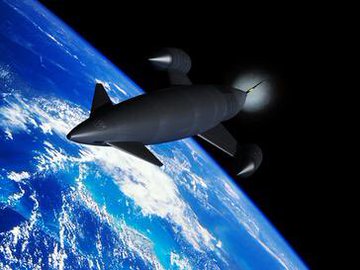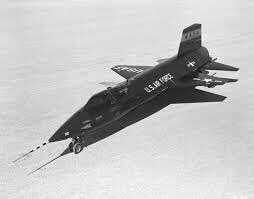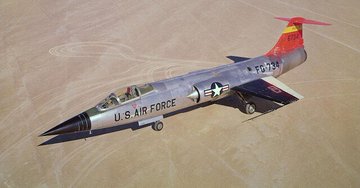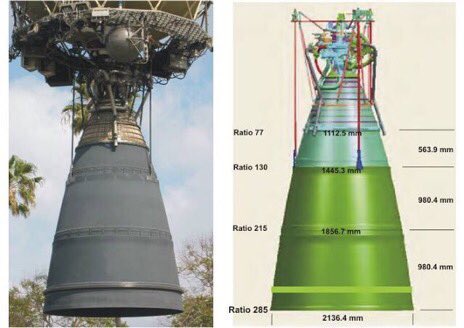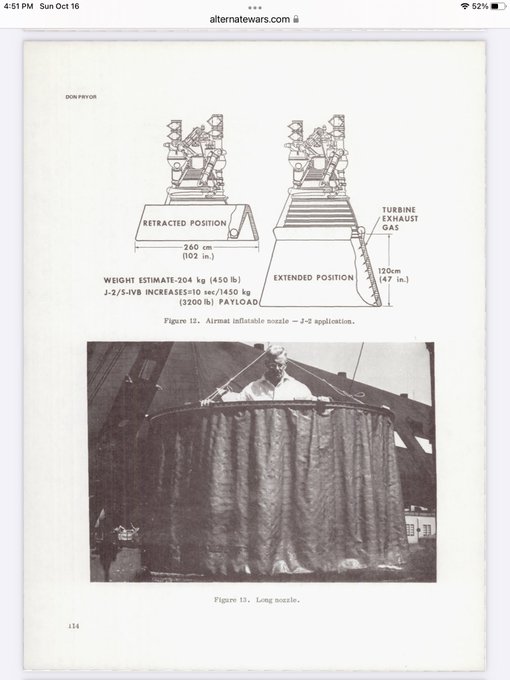Copyright 2024 Robert Clark
I was interested to see this interview with Livingston Holder, co-founder of Radian Aerospace:
As well as the video lecture Mr. Holder did for Valispace:
I noted Radian is following the approach of winged horizontal launch for their near-SSTO. It’s a near-SSTO because it uses sled launch to reduce the propulsion requirements of the craft.
I wonder if Radian could do the trades instead for a vertical launch approach that would be a true SSTO. Former Air Force officer Major Mitchell Burnside Clapp who did stints both with the DC-X and X-33 programs did an analysis showing both hydrogen and kerosene fueled true SSTO’s are possible by vertical launch:
A LO2/Kerosene SSTO Rocket Design.
https://web.archive.org/web/20211001062714/https://erps.org/archives/321
Vertical launch has the advantage that the wings only have to support the dry mass of the craft during return, thus requiring much reduced wing weight. In horizontal launch on the other hand the wings have to support the entire weight of the fully-fueled craft, thus needing a much heavier wing weight.
As Mr. Holder described in the Valispace lecture though the horizontal launch approach has the advantage it can use a sled to provide some of the propulsion and also horizontal flight can reduce the gravity loss.
Still, those large heavy wings for horizontal launch induce a significant dry mass hit which is why I would like to see a trade analysis on both approaches.
In support of the feasibility of vertical launch where the wings only have to support dry mass on return, we can look at the Air Force’s X-37B spacecraft. This is certainly not a SSTO, but I’m referencing the short, stubby wings that enable winged return from orbit.
The small wings will correspond to a relatively small wing weight. Indeed, we could use the X-37B’s plan as a model, scaled-up, for what a vertical launch SSTO might look like. There are actually several aircraft/spacecraft with short stubby wings we could model the basic plan on.
In Mr. Holder’s video discussion he mentioned that during the famous X-33 development and competition back in the 90’s to develop a SSTO, he decided with Boeing to pull out of the competition on financial viability reasons.
But two very important reasons suggest why that conclusion needs to be reconsidered, and why quite likely it is no longer valid.
First, an overwhelmingly important fact is SpaceX has shown space vehicles as privately financed can cut 90%(!) off the development cost compared to the usual government financed approach. And secondly, the large number of satellite launches required with several megaconstellation satellite systems soon coming online, requiring tens of thousands of satellites each, make reusable launchers imperative.
So the two factors of low development cost plus a definite market for the needed launches suggest a reusable SSTO may now be financially feasible.
Still, an operational SSTO has not been done before so there is still some financial and technical risk involved. Then I advise first doing a small scale vehicle that, most importantly, is based on a design of existing expendable rocket stages.
The importance of basing it on existing rocket stages is we can look at the most efficiently weight-optimized stages and then make estimates of the added weight needed for reusability systems.
Then there are two existing rocket stages I think might be useful in this regard: the kerosene fueled Falcon 9 upper stage and the hydrogen fueled Centaur upper stage. Again we want to use small stages at the beginning to limit the financial risk.
The F9 second stage has a quite impressive mass ratio:
Type | Falcon 9 FT Stage 2 |
Length | 12.6m (Separated Length) |
Diameter | 3.66 m |
Inert Mass | 4,000 kg (est.) |
Propellant Mass | 107,500 kg (est.) |
Fuel | Rocket Propellant 1 |
Oxidizer | Liquid Oxygen |
LOX Mass | 75,200 kg (est.) |
RP-1 Mass | 32,300 kg (est.) |
LOX Tank | Monocoque |
RP-1 Tank | Monocoque |
Material | Aluminum-Lithium |
Guidance | Inertial |
Tank Pressurization | Heated Helium |
Propulsion | 1 x Merlin 1D Vac |
Engine Type | Gas Generator |
Propellant Feed | Turbopump |
Thrust | 934kN |
Engine Dry Weight | ~490kg |
Burn Time | 397 s |
Specific Impulse | 348s |
Chamber Pressure | >9.7MPa (M1D Standard) |
Expansion Ratio | 165 |
Throttle Capability | Yes |
Restart Capability | Yes |
Ignition | TEA-TEB, Redundant |
Pitch, Yaw Control | Gimbaled Engine |
Roll Control | Reaction Control System |
Shutdown | Commanded Shutdown |
Reaction Control S. | Cold-Gas Nitrogen Thruster |
https://spaceflight101.com/spacerockets/falcon-9-ft/
An est. 4 tons of dry mass and est. 107.5 tons propellant mass.
Its single Merlin could not launch it from the ground however, since, as an upper stage, the engine does not need thrust/weight ratio above 1.
Two solutions for that that also speak to the vertical vs. horizontal launch question: 1.) we can add a second Merlin, and 2.)we can add sufficient wings for ground launch.
For the 1st approach we would only use small, stubby wings a la the X-37B as we are using vertical launch and the wings only have to support the dry mass on return.
For the 2nd approach note for horizontal launch the engines do not have to have a T/W above 1 because aerodynamic lift is being used to loft the vehicle. But because the wings have to support the fully-fueled weight they need to be heavier, eventhough you don’t have the added weight of an additional engine.
The trades need to be done to see which approach is optimal. It may be both approaches would close to allow an operational SSTO.
As a first level estimate of wing weight, they are typically 5% to 10% of the lifted weight of an aircraft. But with composites we might be able to make it half to that at 2% to 5% of the lifted weight. Now for the case of adding a second Merlin to the F9 upper stage for vertical launch, that would be an additional 470 kg for the extra engine. Then if wing weight is as low as 2% of dry mass that would only be an additional 90 kg added to the dry mass.
On the other hand, if you have to use wings to loft the entire fully-fueled weight that’s 2% to 5% added on to the 108 ton gross weight. That’s 2 to 5 tons added onto the vehicle dry mass in wings alone.
That makes it difficult for this approach to close without the addition of sled launch. Sled launch though adds more to the capital cost of development.
By the way, Holder also discusses in his interview that the engines would use altitude compensation to achieve high vacuum Isp from engines that can launch from ground. There are many ways of accomplishing this. One way that would involve the least technical risk because it is a technique that has been in use already for decades is to use extendible nozzles.
Note that while the suggestion is of basing the SSTO core on the Falcon 9 upper stage it is not necessary to use the actual stage or even the Merlin engine. The tech involved in developing the Falcon 9 was not particularly advanced. Indeed the performance of the Merlin is no more advanced than the kerolox engines already available in the 60's. Then probably we could use just surplus engines lying around such as the RS-27 engines. Quite key is the increased performance needed will come from the altitude compensation nozzles applied to them, able to increase both thrust at sea level and Isp at vacuum.
That’s the discussion for the Falcon 9 upper stage case. For the hydrogen-fueled Centaur case there is again the question of adding additional engines vs. large wings for horizontal launch. For the Centaur to use vertical launch though using the RL10 engine an important consideration is how much the thrust is reduced for the sea level version, to ca. 6 ton force. Then you would likely need 4 to 5 engines instead of the one or two used on the Centaur. This would add in the range of 1 ton to the original 2 ton dry mass just in added engine weight.
But for the wings for the horizontal launch, if it is 2% added weight that would be 2% of the 23 ton gross mass or 460 kg. But if the added wing weight is at 5% that would be 1,150 kg added weight. This is about the same as the added engine weight case.
So it is possible here horizontal launch is more competitive to the vertical launch case.
Robert Clark


